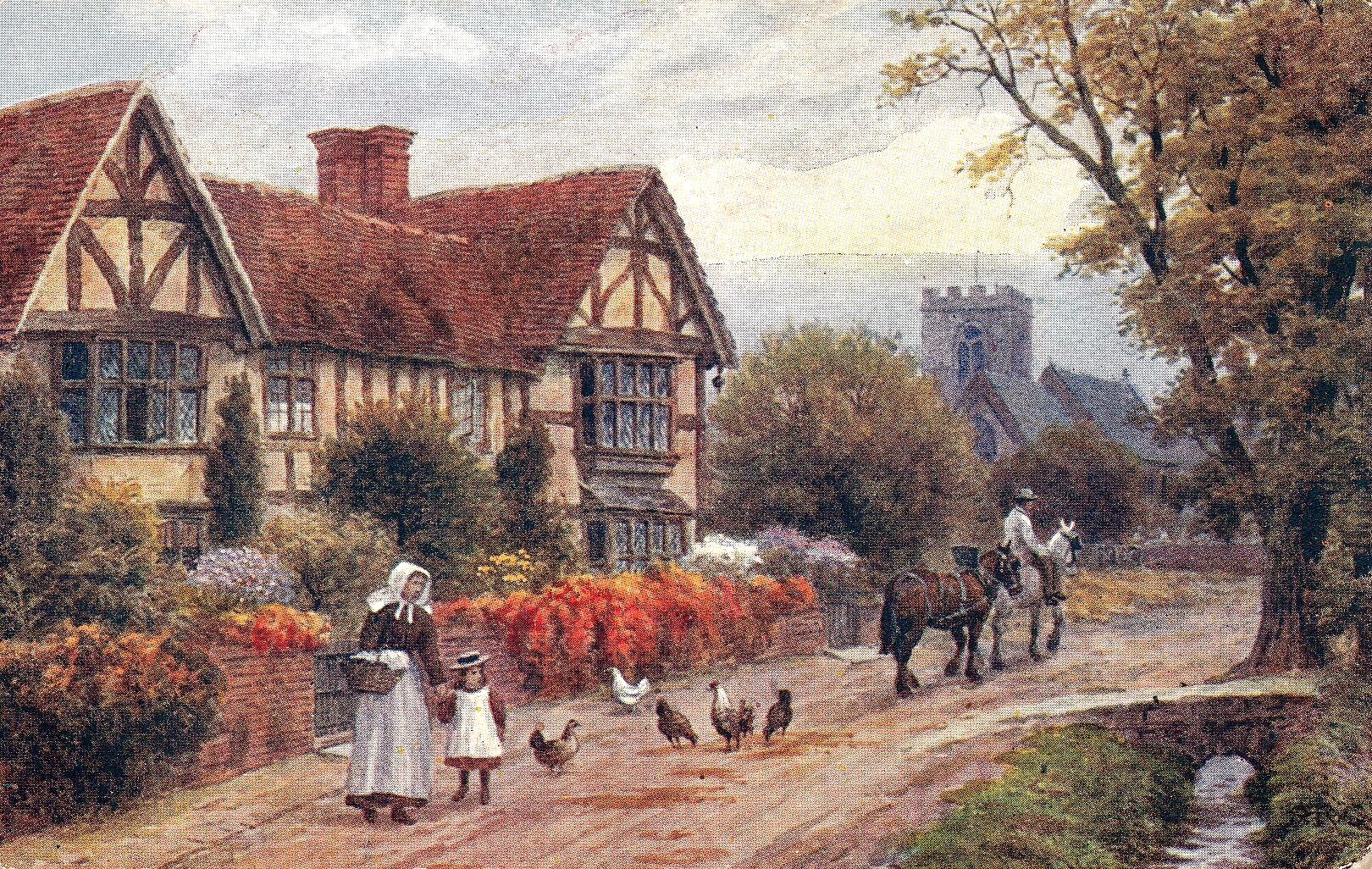Alfred Robert Quinton (28 October 1853 – 10 December 1934)
He was an English artist, known for his paintings of British villages and landscapes many of which were published as postcards.
Quinton was born in Peckham in London in 1853,[2] the youngest of seven children of Elizabeth née Cullum (1818-1886) and John Allen Quinton (1817-1906), a printer, author and journalist. On leaving school A. R. Quinton studied painting at the Heatherley School of Fine Art following which he worked as a steel engraver, but deciding on a career in art he began to work in oils in about 1874 and after in watercolour, working from a studio in Fleet Street in London and after at Lincoln's Inn, exhibiting several of his watercolour paintings at the latter with the Ipswich Fine Art Club in 1882 and 1883. From 1877 Quinton exhibited watercolours at the Royal Society of British Artists.
Quinton with his art equipment strapped to his bicycle
In 1895 he and a friend cycled from Land's End to John O'Groats and Quinton's artworks from the trip were after serialised in the Illustrated Sporting and Dramatic News. His artwork became more in demand and he was able to buy a house with a studio in Finchley in London. His work routine would be to travel around England and Wales for three months of the year, mostly during the summer months and often by bicycle, during which he would draw sketches and take photographs of locations which he would work up into paintings in his studio during the winter months. Many of his artworks were published as postcards by Raphael Tuck and J Salmon Ltd which remain popular with today's collectors. His paintings have also been published in many calendars. Well over 2,000 of his paintings were published between 1904 and the time of his death. He also illustrated a number of books including The Historic Thames by Hilaire Belloc.
Priory cottages - The picture shown here was used on the front cover of the book, ‘Favourite Farmhouse Recipes’
